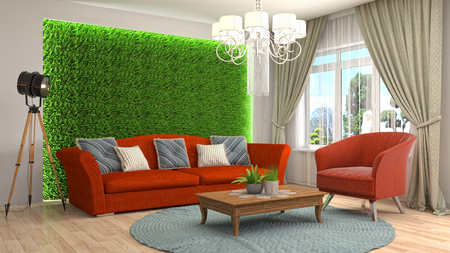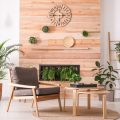Introduction to Green Roofs and Living Walls
Green roofs and living walls are quickly becoming key elements in sustainable outdoor design across the United States. These innovative systems bring nature back into urban spaces, offering a fresh approach to eco-friendly landscaping. But what exactly are green roofs and living walls? Simply put, a green roof is a layer of vegetation planted over a waterproofing system installed on top of a flat or slightly sloped roof. Living walls—sometimes called vertical gardens—are panels of plants grown vertically using hydroponics or soil, attached to interior or exterior walls. As American homeowners, businesses, and cities look for ways to reduce their environmental footprint, these green features are gaining popularity for both their beauty and their benefits. From improving air quality to reducing energy costs, green roofs and living walls are more than just a trend—they’re a smart investment in our future.
Environmental and Lifestyle Benefits
When it comes to green roofs and living walls, the positive impacts go well beyond their eye-catching appearance. These sustainable features bring a host of environmental perks that can transform both your outdoor space and your daily life. Let’s take a closer look at how incorporating greenery into your design can benefit you and your community.
Environmental Perks
Green roofs and living walls are powerful tools for urban cooling, habitat creation, and more. By adding layers of plants to buildings or outdoor structures, you’re helping to mitigate the urban heat island effect—a phenomenon where cities become significantly warmer than surrounding rural areas due to concrete and asphalt absorbing heat. Additionally, these living systems create vital habitats for pollinators like bees and butterflies as well as native birds.
| Benefit | Description |
|---|---|
| Urban Cooling | Reduces surface temperatures, lowering energy costs and combating heat waves in city environments. |
| Habitat Creation | Supports biodiversity by providing food and shelter for local wildlife. |
| Stormwater Management | Absorbs rainwater, reducing runoff and easing pressure on city drainage systems. |
| Air Quality Improvement | Filters pollutants from the air, contributing to a healthier atmosphere. |
Lifestyle Advantages
The benefits aren’t just environmental—they touch your everyday life as well. Green roofs and living walls help improve air quality right where you live, offering cleaner, fresher air for you and your loved ones. They also provide a peaceful escape from the hustle of American city life; imagine relaxing in your own green oasis after a long day or hosting friends in an outdoor retreat that feels worlds away from busy streets.
Creating Your Own Retreat
With thoughtful design, these features can be adapted for homes, apartments, or even commercial spaces—making them accessible whether you’re in a suburban neighborhood or downtown loft. Consider how a rooftop garden or vertical wall of lush foliage could redefine your personal outdoor experience while also giving back to the environment.
![]()
3. Integrating Sustainable Greenery in American Homes
Bringing green roofs and living walls into your outdoor design isn’t just for city skyscrapers or ultra-modern homes—these sustainable features can be adapted to fit a wide range of American home styles, from classic craftsman bungalows to contemporary ranch houses. Start by considering the unique characteristics of your property. If you have a flat or gently sloped roof, a green roof could be a smart option for adding insulation and reducing stormwater runoff. For homes with limited yard space, living walls along fences, patios, or even freestanding panels can introduce lush greenery without taking up valuable square footage.
Adapting to Climate Zones
The U.S. spans diverse climate zones, so it’s important to select plant varieties that will thrive where you live. In the Pacific Northwest, opt for moisture-loving mosses and ferns; in the Southwest, drought-tolerant succulents and native grasses are key. Make sure to consult local nurseries or extension offices for guidance on regionally appropriate plants and growing methods.
Backyard & Patio Applications
You don’t need a massive budget or extensive renovations to get started. Modular green roofing systems are now available in many home improvement stores, making it easier to retrofit garages, sheds, or pergolas with a layer of living plants. For patios or decks, vertical planters can be attached directly to exterior walls or hung as privacy screens. These installations not only cool down outdoor spaces during summer but also create natural habitats for birds and pollinators.
Practical Tips for Success
To ensure lasting results, use lightweight soil mixes designed specifically for rooftop and wall installations. Incorporate efficient irrigation systems—like drip lines—to conserve water and keep maintenance manageable. Finally, think about how these green features blend with your home’s architecture and neighborhood aesthetic: using native stone edging or reclaimed wood frames can give your sustainable greenery a distinctly American feel while staying true to eco-friendly principles.
4. Eco-Friendly Materials and Plant Selection
Choosing the right materials and plant species is key to creating a sustainable green roof or living wall that’s both eco-friendly and beautiful. By selecting regionally appropriate, recycled, or low-impact materials, and focusing on native plants that thrive in your local climate, you’ll boost your outdoor space’s resilience while supporting local wildlife and reducing maintenance needs.
Recommended Sustainable Materials
| Material Type | Description | Sustainability Benefits |
|---|---|---|
| Recycled Plastic Panels | Lightweight, durable panels made from post-consumer plastics | Reduces landfill waste, weather-resistant, reusable |
| Cork Substrates | Naturally water-resistant and renewable underlayment for green roofs | Biodegradable, harvested without killing trees, insulative properties |
| Bamboo Frameworks | Fast-growing, strong structural support for living walls | Rapidly renewable resource, low carbon footprint |
| Locally Sourced Stone or Gravel | Used for drainage layers or aesthetic ground cover | Minimizes transportation emissions, supports local economy |
| Certified Wood (FSC/PEFC) | Treated wood from sustainably managed forests for planters or frames | Ensures responsible forestry practices and longevity |
Native Plant Selection by U.S. Region
Selecting native plants not only ensures better survival rates but also provides vital habitat for pollinators and birds. Here are some top choices by region:
| Region | Green Roof Plants | Living Wall Plants | Ecosystem Benefits |
|---|---|---|---|
| Northeast (e.g., New York, Boston) | Sedum spp., Eastern Bluestar (Amsonia tabernaemontana) | Pennsylvania Sedge (Carex pensylvanica), Wild Columbine (Aquilegia canadensis) | Drought tolerance, supports native bees & butterflies |
| Southeast (e.g., Atlanta, Miami) | Pink Muhly Grass (Muhlenbergia capillaris), Coral Honeysuckle (Lonicera sempervirens) | Cinnamon Fern (Osmundastrum cinnamomeum), Beautyberry (Callicarpa americana) | Attracts hummingbirds, adaptable to humidity & heat |
| Midwest (e.g., Chicago, Minneapolis) | Purple Prairie Clover (Dalea purpurea), Little Bluestem (Schizachyrium scoparium) |


